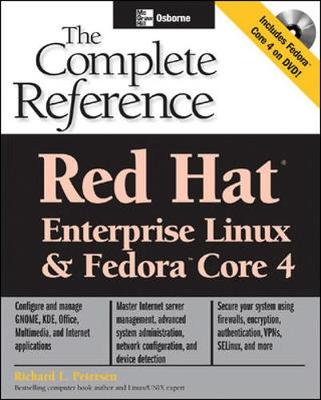Osborne Complete Reference
2 total works
This is a guide to Linux, the UNIX-variant operating system. The book is revised to address important changes to Linux, including: growth in the number of desktops and windows managers, new X-Windows chapters, and new programming tools and utilities. The CD-ROM contains a free full version of OpenLinux Lite by Caldera, the leading vendor of Linux software. Created in 1991, Linux is a UNIX clone, free of any commercially copyrighted software, developed for Intel-based PCs. The operating system was designed to bring UNIX power and flexibility to PCs and mainframes. Linux has grown to become a popular OS choice for PC workstations. Due to the corporate world's tendency to not "admit" running mission-critical applications on any "free" operating systems, the exact number of Linux users cannot be confirmed. However, estimates and acknowledgements of use from some major corporations, have placed the installed base of Linux between three-to-five million. It has even been suggested by industry experts to be as high as nine million. Well-known corporations on Linux's "open" list includes NASA, Disney, Lockheed Martin and General Electric.
The industry is openly betting on Linux to have an impact in the next decade's transformation into using the Network Computing Architecture. Many are also saying that the OS will give Microsoft's flag-ship, Windows NT, still some competition in the years to come. Richard Petersen is the author of "Introductory C: Pointers, Functions, and files.
The industry is openly betting on Linux to have an impact in the next decade's transformation into using the Network Computing Architecture. Many are also saying that the OS will give Microsoft's flag-ship, Windows NT, still some competition in the years to come. Richard Petersen is the author of "Introductory C: Pointers, Functions, and files.
Red Hat® Enterprise Linux & Fedora™ Core 4: The Complete Reference
by Richard Petersen
Published 17 December 2003
The new edition of this best-selling reference offers complete coverage of all aspects of the Red Hat Fedora and Enterprise Linux distribution. Full details on everything from installation and configuration to system administration and server management of Enterprise Linux--with specifics on the Linux Kernel 2.6--are included. The new IPv6 Protocol, including the network security features of IPSEC and Virtual Private Networks, are also covered. The DVD contains the entire Red Hat Fedora Core distribution--normally available on multiple CD-ROMs.

